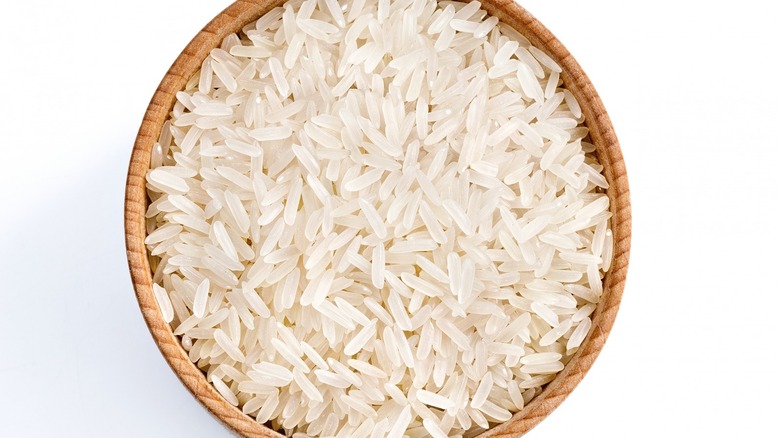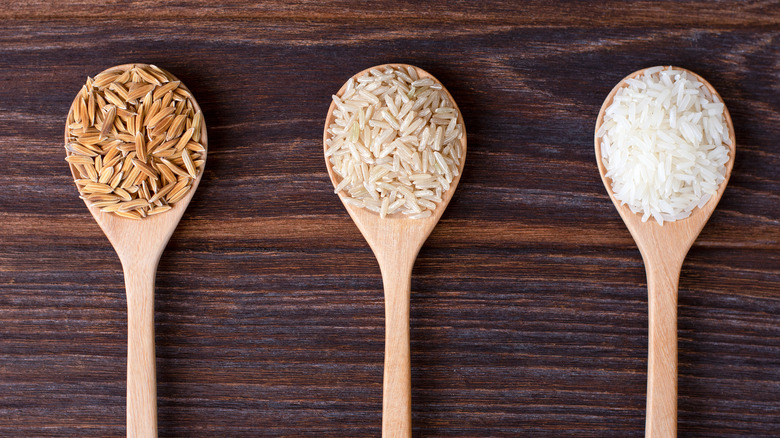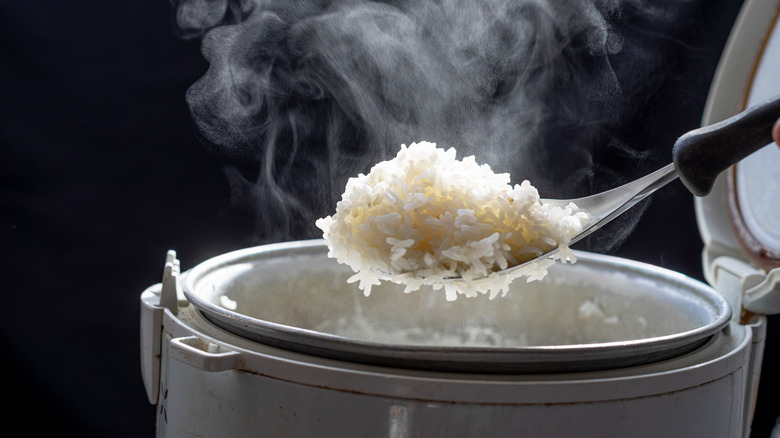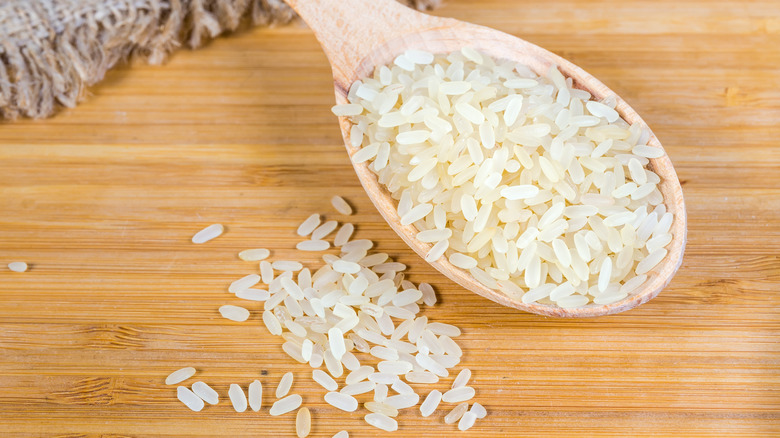What, Exactly, Is Converted Rice?
Rice is a key food source for more than half of the global population. Since U.S. culinary traditions favor more readily available crops like wheat, corn, and potatoes, however, many Americans aren't as well-versed in different types of rice as some other countries. So, if you're perusing the rice section at the grocery store, you may have some questions — for example, what, exactly, is converted rice?
The term refers to the method by which the rice is processed rather than the variety of grain. Converted rice, also known as parboiled rice, is soaked, steamed, and dried in its husk before it's milled — a process that removes the indelible outer husk enveloping each grain. Implemented by ancient peoples from numerous countries across the Asian and African continents, parboiling made removing the grain's tough outer husk a bit easier. However, that's not the only benefit the process provides.
Because the steaming process gelatinizes the starches contained in bran rice, when converted rice is fully cooked, the grains are firmer and less likely to stick together. The steaming process also infuses some of the vitamins and minerals contained in other parts of the rice, as well as some of the husk's color, directly into the starchy granule, turning it a soft yellow color. As such, parboiled rice is considered more nutritious than white rice, but not quite as nutritious as brown rice.
Converted rice versus white and brown rice
Made from the seeds of the Oryza plant, every variety of rice starts with four main components: the germ (the rice's reproductive organ and the source of its nutrients), the endosperm (the kernel of rice), the bran (a thin, starchy layer that covers the kernel), and the husk (an outer shell that surrounds the other components). Since the husk is inedible, all rice must be milled before it can be eaten.
If rice is only milled once without any further processing, you get brown rice, in which the nutritious germ and fibrous bran are fully intact. If the rice is milled a second time, however, the bran and germ are then sloughed off, and you get white rice, which is less nutritious. Converted rice, however, is somewhere in the middle: Soaked in warm water, partially steamed, and dried before ever leaving the husk, the kernels are then milled so these husks are removed. This process produces rice that's firmer and fluffier than brown rice while retaining more of the grain's natural color, nutty flavor, and nutritional value than white rice.
How to use and where to buy converted rice
Converted rice can be made in all the same ways you might cook brown or white rice, though it requires a bit more water and a little more time than the white variety. While stove-top rice requires simmering 1 part converted rice with 2 ¼ parts water for 25 minutes, which is slightly longer than the 15-20 minutes it takes white rice to cook, converted rice can also be made in a rice cooker, pressure cooker, or even in the microwave, if you're in a hurry.
Because converted rice retains more of the grain's nutritional value, it can always take the place of white rice if you're seeking a healthier option. More specifically, because converted rice takes longer to cook and requires more liquid, it's a great option for recipes that require slow cooking, like soup, golombki, or Spanish rice.
Converted rice is fairly easy to find and can be purchased at most major grocery stores and supermarkets. Popular brands that produce converted rice include Uncle Ben's, Zatarain's, Iberia, and Mahatma.
Nutritional information for converted rice
One of the most compelling reasons to use converted rice is its enhanced nutritional value when compared to white rice. Because some of the nutrients contained in the bran and the germ migrate to the starchy grain during the parboiling process, converted rice is left with more of the B vitamins — thiamine, niacin, and vitamin B6 — than white rice. These particular B vitamins are essential to the human body, as they convert food to energy, enhance brain function, and support immune response.
The parboiling process also forces fiber contained in rice husks into the grain, imbuing it with twice the amount of fiber as white rice (though not even half as much as brown rice). Fiber not only helps move waste through the body, but it also aids digestion and helps the body to better absorb nutrients. The resistant starch created during the parboiling process can also withstand the stomach's harsh environment, making its way down to the large intestine where it acts as a probiotic by feeding healthy bacteria. Containing more protein than white or brown rice, converted rice may even have the ability to lower blood sugar, as the additional protein works to absorb carbohydrates and breaks them down at a more gradual rate.



